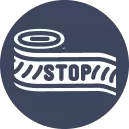Asset identification and marking is essential within many industries. They assist in tracking items, preserving them, and ensuring smooth operation. They are used to assign labels to parts, products, and equipment so that all of them have their own assigned label that will allow to trace them. This system is critical for industries ranging from manufacturing to logistics, healthcare, and public safety.
The Importance of Identification and Marking
Identification and marking aren’t just about sticking labels on things. They make a lot of practical contributions. Identifiably marking things improves the manageability of things, errors to be avoided, and safety for enterprises.
Improving Traceability and Accountability
The clear marking makes it easy to trace every item from its origin to its final use. Information such as production dates, batch numbers, or safety instructions can be embedded in each product or part. This characteristic is very helpful while an audit, recall or quality check is needed. It also enables people to be held accountable when something goes wrong in the production or supply process.
Preventing Counterfeiting and Fraud
In certain industries, counterfeiting represents a significant challenge. Using unique and tamper-proof codes or designs to mark items ensures that it would be difficult for counterfeiters to replicate products. This protection is vital for the safety and reliability of products such as electronics, medicines, or car parts. However, the brands are protected and customers will receive genuine products utilizing advanced marking processes.
Modern Technologies Used in Identification and Marking
Advanced technology is used to ensure that marks made on the objects are clear and permanent, in modern marking methods.
1. Laser Marking Technology
Laser marking uses a concentrated beam of light to etch or burn information into the surface of an object. This exact technique makes it possible for small details to be clearly etched into materials such as metal, plastic, or ceramic. Because laser marks are resistant to wear, chemicals and extreme temperatures, they do not easily fade. It is quick and low-maintenance technology, and therefore widely accepted across industries.
2. Dot Peen Marking
A hardened, small tip impacts a material surface and produces a series of dots. These dots make letters, numbers or logos. For marking heavy equipment and machinery, this method is perfect because it offers deep, long-lasting marks. Dot peen marking is one of the cost-effective methods and does well under challenging conditions.
3. Inkjet and Thermal Transfer Printing
For high-resolution color images or detailed content, inkjet and thermal transfer print options are available. These printers are used to print high-resolution text and images on various types of surfaces. They serve to label, package and provide rich product content. These techniques are quick and leave clear and long-lasting marks.
Customization and Flexibility in Marking Solutions
Industries have diversified requirements. Solutions for marking need to adapt enough to solve each case.
- Manufacturing: In manufacturing, accuracy is crucial. Marking systems are often used on assembly lines to identify parts with details such as production dates, serial numbers, and safety procedures. This will increase quality and eliminate mistakes.
- Logistics and Warehousing: In logistics, demand planning is important for inventory management. Marking packages, pallets, and containers allow workers to quickly identify items. This streamlines the workflow and accelerates goods throughput in the supply chain, reducing errors.
- Healthcare: Safety and equipment tracking are essential in hospitals and clinics. Marking saves time and helps ensure the correct and safe use of medical devices and instruments. It also helps track each device’s usage and maintenance history.
- Public Safety and Infrastructure: Utility poles and other public or emergency equipment are marked in public places. Clearly marked locations help keep the public safe and help identify needed services in a timely manner.
Versatility with Different Materials
These markings techniques are suitable for various materials. Use them on metals, plastics, glass, and composite materials. Accordingly, there is a relevant marking method already in place, if the item is part of a machine, consumer product, or infrastructure part. These experts can decide on the most suitable method as per the material and the environment where the piece will be utilized.
Benefits of Identification and Marking
There are many areas where a proper marking systems can help the business. Here are just a few of the benefits businesses see when adopting these systems.
1. Better Inventory Management and Asset Tracking
Companies use marking systems to track all the items in their inventory. It makes it easier to track where an item is and how it is being used when there is a unique number or code for each item. This results in fewer losses, reduced misplacement, and better records. It also saves minutes and money by minimizing the need for human checks or reordering the product.
2. Increased Operational Efficiency
Time saved is money saved. Companies can automate many tasks, including data entry and tracking, by using marking systems. This allows for faster production and reduced downtime. The identifier ensures that when everything is included, the workflow is more productive as a whole.
3. Enhanced Safety and Regulatory Compliance
Many industries are subject to strict safety standards. Companies need to adhere to these requirements, which is where clear and permanent markings can come into play. They keep in view critical information like manufacturing dates, serial numbers, and safety warnings. It helps to ensure that the workplace is safe and can help resolve issues promptly during emergencies.
4. Reduced Waste and Cost Savings
It helps to prevent errors, which then lead to waste. For instance, misidentification could also result in using the wrong part in manufacturing, which could lead to recalls or rework that could incur a cost in the millions. By accurately tagging items, businesses eliminate these errors, resulting in significant cost savings in the long run. Such efficiency can also reduce the overall production costs.
Conclusion
Identification and marking are essential for monitoring assets, guaranteeing safety, and enhancing operational effectiveness. By using clear, permanent marks on every item, companies can reduce mistakes, save costs, and make better use of their inventory. These systems are found in a range of industries from manufacturing and logistics to healthcare and public infrastructure.



